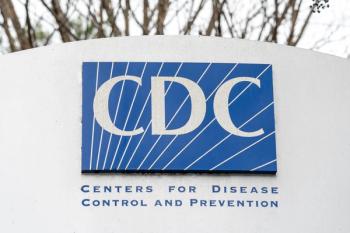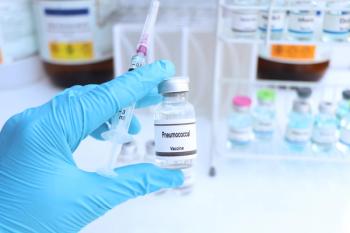
Improved Understanding of Hidradenitis Suppurativa Can Enhance Patient Outcomes
Researchers assessed the difference between hidradenitis suppurativa and other skin conditions regarding the initiating events, inflammatory signature, and molecular and clinical features of each disease.
Because of its complex inflammatory signature, hidradenitis suppurativa (HS) demonstrates both similar and unique characteristics with a variety of other skin diseases, according to a study published in the Journal of Investigative Dermatology.1 Researchers believe this highlights a need for increased understanding of HS’ pathogenic overlap with other inflammatory skin conditions.
“HS is a chronic inflammatory skin disease characterized by painful papules, nodules, and abscesses as well as sinus tunnels and double-headed comedones,” wrote authors of the study. “HS lesions primarily develop in intertriginous and apocrine gland-rich regions, such as the axillary, groin, perineal, perianal, and inframammary regions. The overall global prevalence of HS is estimated to be 0.40%, with a prevalence of 0.7%-1.2% estimated in the United States and Europe.”
Compared with the most prominent skin conditions, HS incidence is significantly rare. As the most common skin condition in the US, acne impacts up to 50 million Americans. Other conditions like eczema impact 1 in 10 US adults.2 Furthermore, with skin conditions overall impacting up to 1.8 billion patients worldwide, HS serves as just a small portion of the population.3
READ MORE:
Despite the incidence and prevalence of HS being outweighed by other more prominent skin diseases, these conditions all share similar pathogenic features. Some of the conditions similar to HS include psoriasis, pyoderma gangrenosum, acne, folliculitis, pilonidal sinus disease (PSD), and alopecia areata.1
The presentation of both similarities and differences with other skin conditions made HS a target for researchers looking to provide better insights on the disease.
“The overlap between HS and other inflammatory skin diseases highlights the heterogeneity and complexity of HS, which may explain why HS is sometimes misdiagnosed,” they continued.1 “In addition, the pathogenic similarities between HS and other inflammatory skin diseases present opportunities for repurposing disease management strategies, underscoring the need for physicians to fully understand which pathogenic factors are shared with other skin diseases and which are unique to HS.”
This previous knowledge led researchers to conduct an investigative review and highlight the clinical, molecular, and cellular features; initiating events; inflammatory signatures; molecular and cellular features; genetic risk factors; and environmental triggers. Using all of these characteristics, researchers differentiated HS with other inflammatory skin conditions.
Above all, the researchers’ goal was to reduce future delays in HS diagnosis and improve patient outcomes.
First, researchers explained the pathophysiology of HS before diving into its similarities and differences with other skin diseases.
“HS pathophysiology is not completely understood but is thought to be driven by environmental and genetic risk factors that cause immune system dysregulation and follicular inflammation and occlusion,” wrote the authors.1 “Prolonged activation of proinflammatory pathways can lead to chronic inflammation, which can cause recurrent HS lesions and sinus tracts.”
They then explored how HS matched up with either diseases involving skin inflammation only or those that involved skin and hair follicle inflammation. For diseases with just skin inflammation, researchers compared HS with psoriasis and pyoderma gangrenosum. For those with skin and hair follicle inflammation, researchers compared HS with acne, folliculitis, PSD, and alopecia areata.
“HS shares many features with several other inflammatory skin diseases, including certain risk factors, immune system dysregulation, and activation of the Th1 and Th17 cytokine pathways,” they continued. “However, HS also has a unique inflammatory signature and pathophysiology, resulting in clinical manifestations that distinguish it from other dermatologic diseases.”
Upon the researchers’ findings, they determined that HS can be readily differentiated from other inflammatory skin diseases through location, type, and severity of lesions on the patient. Those lesions are a tell-tale sign of HS because, in this condition, they are much more severe than lesions in diseases like acne, psoriasis, and most types of folliculitis. And while lesions of acne conglobata, dissecting cellulitis of the scalp, and PSD are generally severe like HS, they typically appear on separate parts of the body.
Despite differentiation in the skin lesions of various skin diseases, environmental triggers, the microbiome, and genetics are all significant factors of HS and other similar skin conditions. But while many skin conditions may display both similarities and differences, it’s ultimately the complexity of HS immune cells that sets the disease apart from other skin conditions. Getting a better overall grasp on the unique aspects, as well as the similarities, between HS and other skin conditions will continue to expand the necessary dermatological knowledge of patients and providers alike.
“The inflammatory signature of HS is complex and involves numerous immune cell subsets, immune cell interactions, and cytokines, which is in contrast to some other inflammatory skin diseases that have more distinct cellular and molecular phenotypes,” concluded the authors.1 “Understanding the unique pathogenesis and clinical characteristics of HS as well as the pathogenic overlap between HS and other inflammatory skin diseases may reduce delays in HS diagnosis, improve patient outcomes, and create opportunities to repurpose disease management strategies.”
READ MORE:
Pharmacy practice is always changing. Stay ahead of the curve: Sign up for our
References
1. Byrd AS, Moreau JM, Petukhova L, et al. Differentiating the role of inflammation in hidradenitis suppurativa from that in other inflammatory skin diseases. J Invest Dermatol. Published online May 24, 2025. https://doi.org/10.1016/j.jid.2025.04.009
2. Skin conditions by the numbers. American Academy of Dermatology Association. February 11, 2025. Accessed July 14, 2025. https://www.aad.org/media/stats-numbers
3. WHO’s first global meeting on skin NTDs calls for greater efforts to address their burden. WHO. March 31, 2023. Accessed July 14, 2025. https://www.who.int/news/item/31-03-2023-who-first-global-meeting-on-skin-ntds-calls-for-greater-efforts-to-address-their-burden
Newsletter
Pharmacy practice is always changing. Stay ahead of the curve with the Drug Topics newsletter and get the latest drug information, industry trends, and patient care tips.






































































































































